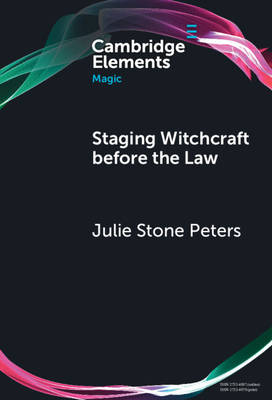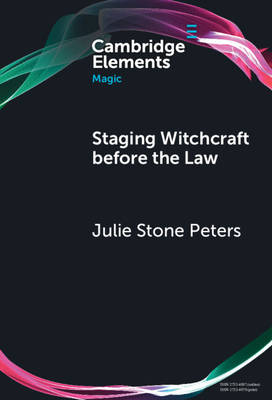
- Afhalen na 1 uur in een winkel met voorraad
- Gratis thuislevering in België vanaf € 30
- Ruim aanbod met 7 miljoen producten
- Afhalen na 1 uur in een winkel met voorraad
- Gratis thuislevering in België vanaf € 30
- Ruim aanbod met 7 miljoen producten
Zoeken
Staging Witchcraft Before the Law
Skepticism, Performance as Proof, and Law as Magic in Early Modern Witch Trials
Julie Stone Peters
€ 104,95
+ 209 punten
Uitvoering
Omschrijving
While the judicial machinery of early modern witch-hunting could work with terrifying swiftness, skepticism and evidentiary barriers often made conviction difficult. Seeking proof strong enough to overcome skepticism, judges and accusers turned to performance, staging 'acts of Sorcery and Witch-craft manifest to sense.' Looking at an array of demonological treatises, pamphlets, documents, and images, this Element shows that such staging answered to specific doctrines of proof: catching the criminal 'in the acte'; establishing 'notoriety of the fact'; producing 'violent presumptions' of guilt. But performance sometimes overflowed the demands of doctrine, behaving in unpredictable ways. A detailed examination of two cases - the 1591 case of the French witch-demoniac Françoise Fontaine and the 1593 case of John Samuel of Warboys -suggests the manifold, multilayered ways that evidentiary staging could signify - as it can still in that conjuring practice we call law. This title is also available as Open Access on Cambridge Core.
Specificaties
Betrokkenen
- Auteur(s):
- Uitgeverij:
Inhoud
- Aantal bladzijden:
- 78
- Taal:
- Engels
- Reeks:
Eigenschappen
- Productcode (EAN):
- 9781009469708
- Verschijningsdatum:
- 9/01/2025
- Uitvoering:
- Hardcover
- Formaat:
- Genaaid
- Afmetingen:
- 152 mm x 229 mm
- Gewicht:
- 276 g

Alleen bij Standaard Boekhandel
+ 209 punten op je klantenkaart van Standaard Boekhandel
Beoordelingen
We publiceren alleen reviews die voldoen aan de voorwaarden voor reviews. Bekijk onze voorwaarden voor reviews.











